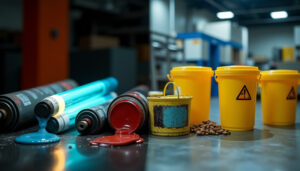Hazardous Dumpster Items
That moment of uncertainty hits everyone – you’re at a dumpster with an old TV or leftover paint, unsure if they belong there. These simple disposal choices might seem harmless but can create serious environmental hazards and legal issues.
The list of items banned from dumpsters surprises most people. Household chemicals, electronic waste, and many other items need special handling and disposal methods. My years in waste management have taught me that proper disposal means more than rule-following – it protects our environment and communities.
This piece covers the 10 most dangerous items you should never throw in your dumpster. You’ll learn safe, legal alternatives to dispose of these materials. The guide helps you follow local regulations and safeguard our environment.

Understanding Hazardous Waste Classifications
Let’s tuck into what makes certain items too dangerous for regular dumpster disposal. My waste management experience has shown how misunderstanding hazardous materials can create serious risks.
Definition of hazardous materials
A hazardous material is any item or substance that can harm humans, animals, or the environment. These materials fall into four key categories:
- Ignitability: Materials that can easily catch fire (flash point below 140°F)
- Corrosivity: Substances with extreme pH levels that can eat through materials
- Reactivity: Items that can explode or create toxic fumes when mixed
- Toxicity: Materials harmful when ingested or absorbed
Common household hazardous items
Many everyday items in our homes qualify as hazardous waste. Here’s what you can’t throw in regular dumpsters:
- Cleaning Products: Oven cleaners, drain cleaners, toilet bowl cleaners
- Automotive Items: Motor oil, antifreeze, brake fluid
- Home Maintenance: Paints, solvents, wood preservatives
- Electronics: Batteries, fluorescent bulbs, old TVs
- Garden Products: Pesticides, herbicides, fertilizers
Legal requirements for disposal
Strict regulations govern legal disposal methods. The Environmental Protection Agency (EPA) mandates special handling for hazardous waste disposal. Most communities have designated collection centers for these materials.
Warning labels help identify hazardous materials. Signal words like “DANGER,” “WARNING,” or “CAUTION” indicate different hazard levels. Products marked “DANGER” need the most careful handling because they’re highly toxic.
Improper disposal isn’t just dangerous – it breaks the law. You could face hefty fines for putting hazardous materials in regular dumpsters. Federal guidelines set minimum standards, and each state adds its own requirements.
My experience suggests treating any product with warning labels as potentially hazardous. If you’re unsure, check with local waste management authorities or review EPA guidelines for proper disposal methods.
Chemical-Based Products to Avoid
My experience with chemical-based products has shown me numerous disposal mistakes people could easily avoid. The most common chemical hazards should never end up in your dumpster.
Paint and solvents
Paint isn’t just about color – it’s a complex chemical cocktail. Oil-based paints create particular problems because they contain volatile organic compounds (VOCs). These VOCs can vaporize and damage our ozone layer, and the EPA strictly regulates their disposal.
Paint disposal requires careful attention to both the paint itself and its residues. Paint solvents, thinners, and industrial paints containing resins or epoxies need special handling. The best solution is to use up the paint completely or take it to a certified hazardous waste facility.
Cleaning products and pesticides
The toxic nature of common cleaning products often goes unnoticed. Many household cleaners contain chemicals that react dangerously when mixed or disposed of incorrectly. Some water-soluble cleaning products can go down the drain, but others need special handling.
Pesticides create even bigger risks. These products can contaminate soil and water supplies if mishandled. The EPA’s guidelines make it clear: pesticides should never go down any drain or onto the ground. Your local Cooperative Extension Service can provide proper disposal options.
Automotive fluids and oils
Automotive fluids rank among the most mishandled toxic materials. Here’s what you should know about different automotive fluids:
- Motor Oil: Can be recycled at most auto parts stores
- Brake Fluid: Highly toxic and flammable – requires special disposal
- Antifreeze: Contains toxic chemicals harmful to wildlife
- Power Steering Fluid: Must be disposed of at hazardous waste facilities
- Transmission Fluid: Can be recycled with proper handling
A vital rule stands out – never mix different automotive fluids. A small amount of gasoline mixed with recyclable motor oil can contaminate an entire batch. Separate, clearly labeled containers work best for each type of fluid.
Chemical-based products don’t simply vanish when thrown in a dumpster. They leak, combine with other materials, and create hazardous conditions. Most auto parts stores and local waste management facilities offer free recycling programs for these materials. Taking extra time to dispose of them properly makes a real difference.
Electronic and Battery Hazards
My work in waste management spans decades, and electronic waste creates some of the most dangerous disposal situations. Technology moves forward quickly, and we throw away more electronics than ever before. You need to know what to do with them.
Types of prohibited electronics
People often ask me “can you put a tv in a dumpster?” My answer never changes – absolutely not. Here’s what you should never put in a dumpster:
- Video Display Devices: TVs, monitors, laptops
- Computing Equipment: Computers, tablets, printers
- Entertainment Systems: Gaming consoles, DVD players
- Communication Devices: Phones, fax machines
- Home Electronics: Microwaves, digital clocks
Battery disposal regulations
Battery disposal rules have changed a lot over the last several years. Most states now have tough rules about handling different types of batteries. Rechargeable batteries need special attention because they contain materials like nickel-cadmium, lithium-ion, and lead that can harm the environment badly.
Here’s what you should do with batteries:
- Separate batteries by type (alkaline, rechargeable, lithium)
- Tape the terminals of lithium and rechargeable batteries
- Store in non-metal containers
- Take to authorized collection points
Environmental impact of e-waste
Improper e-waste disposal has devastating effects on our environment. I’ve seen electronic components contaminate soil and water supplies firsthand. Toxic substances like lead, mercury, and cadmium leak into the environment when electronics break down in landfills.
E-waste grows three times faster than regular municipal waste, which worries me. My field experience shows the worst environmental damage comes from:
- Soil contamination from heavy metals
- Water pollution affecting aquatic life
- Air pollution from improper recycling
- Resource depletion of rare earth elements
Most electronics contain valuable materials ready for recycling. Many retailers and manufacturers now run take-back programs, and communities organize e-waste collection events regularly. These programs handle toxic components safely while recovering valuable materials for reuse.
Medical and Biological Waste Restrictions
Medical waste disposal needs special attention. I’ve witnessed serious problems when these materials end up in regular dumpsters. My experience as a waste management professional shows that proper disposal of medical items goes beyond following rules – it protects public health.
Prescription medications
Medication disposal requires careful consideration. Flushing pills down the toilet or tossing them in a dumpster can harm our environment. These FDA-approved disposal methods work best:
- Use authorized medication take-back locations
- Mix with undesirable substances (like coffee grounds)
- Place in sealed containers before disposal
- Participate in National Prescription Drug Take-Back Day events
- Use pharmacy mail-back programs
Medical sharps and equipment
I’ve handled many cases of improper sharps disposal, and understanding the risks is vital. Never throw loose needles or syringes directly into a dumpster. FDA-cleared sharps disposal containers are the safest option. These containers should be:
- Puncture-resistant and leak-proof
- Properly labeled with “CONTAINS SHARPS“
- Sealed tightly when three-quarters full
- Disposed of through authorized collection sites
Biological waste handling
Biological waste needs the most careful handling among all medical materials. This category includes items with blood, body fluids, or other potentially infectious materials. Biological waste must stay in specialized containers and licensed medical waste disposal services should handle it.
The safe handling of biological waste demands attention to these key points: Never mix biological waste with regular trash, keep it in leak-proof containers, and ensure proper labeling. Most hospitals and medical facilities provide disposal services for home-generated biological waste.
Home medical waste generators should contact their local health department. Local guidelines and appropriate disposal services vary by area. Some communities offer special waste pick-up services where trained handlers collect medical waste from homes.
Improper disposal of medical and biological waste creates dangers and breaks the law. I’ve seen improper disposal cause serious injuries and lead to big fines. Working with authorized disposal services is the safe choice rather than risking regular dumpster disposal.
Safe Disposal Alternatives
Let’s explore safe and legal ways to dispose of hazardous materials now that we know what can’t go in dumpsters. My years in waste management have helped me find several reliable alternatives that protect our communities and environment.
Local disposal facilities
Most communities provide free disposal options for household hazardous waste. Local facilities are the most convenient solution for residents. Your regular garbage bill typically covers the cost at transfer stations that accept hazardous materials without charge.
These essential guidelines will help you use these facilities:
- Keep materials in original containers when possible
- Pack items in sturdy, leak-proof boxes
- Never bring containers larger than five gallons
- Respect the 35-gallon limit per load
- Bring sharps in approved containers
Recycling programs
Recycling programs have reshaped what we once thought of as waste into valuable resources. The benefits of recycling hazardous materials extend far beyond environmental protection. Proper recycling helps us:
- Reduce greenhouse gas emissions
- Decrease reliance on raw materials
- Lower energy consumption
- Minimize landfill usage
- Create cost savings for businesses
- Support green initiatives
Many retailers now run take-back programs for specific items. Auto parts stores accept used motor oil, while hardware stores take old batteries and fluorescent bulbs. These programs make proper disposal convenient and free.
Professional waste services
Hazardous Dumpster Items: Professional waste services are your best option for larger quantities or particularly dangerous materials. Companies like Clean Harbors and Safety-Kleen provide complete solutions that ensure regulatory compliance.
These services offer advantages that matter:
- Customized pickup schedules
- Complete documentation and manifests
- Proper treatment and disposal
- Regulatory compliance support
- Liability protection
Professional services handle everything from PCBs to medical waste effectively. They use advanced technologies and maintain strict safety protocols that way beyond the reach and influence of minimum requirements. The peace of mind and environmental protection they provide justify the cost.
The sort of thing I love about professional services is knowing how to create custom waste disposal plans. They assess your specific needs and develop solutions that meet both regulatory requirements and practical constraints. This personalized approach often results in more efficient and cost-effective disposal solutions than trying to manage hazardous waste independently.
Note that multiple disposal options are vital when dealing with items that cannot go in a dumpster. Safe and legal handling of these materials remains the priority whether you choose local facilities, recycling programs, or professional services.
Conclusion
Proper disposal of hazardous materials keeps our environment and communities safe. My extensive experience in waste management has taught me how small disposal decisions can create major environmental effects. Every item we discussed – from household chemicals to electronics and medical waste – needs specific handling and disposal methods.
Your local waste management facilities have several options to dispose of hazardous items. Communities typically provide economical solutions for household hazardous waste disposal. Many retailers also run convenient take-back programs for batteries and electronics.
Dumpster regulations might seem complex but they protect our soil, water, and air quality. These rules also keep waste management workers safe from dangerous exposure to the waste. If you’re unsure on an item, contact us today or check the EPA guidelines.
Hazardous Dumpster Items | Blog Article | EWS Dumpster Rentals | All Rights Reserved 2024 | Simpsonville SC

